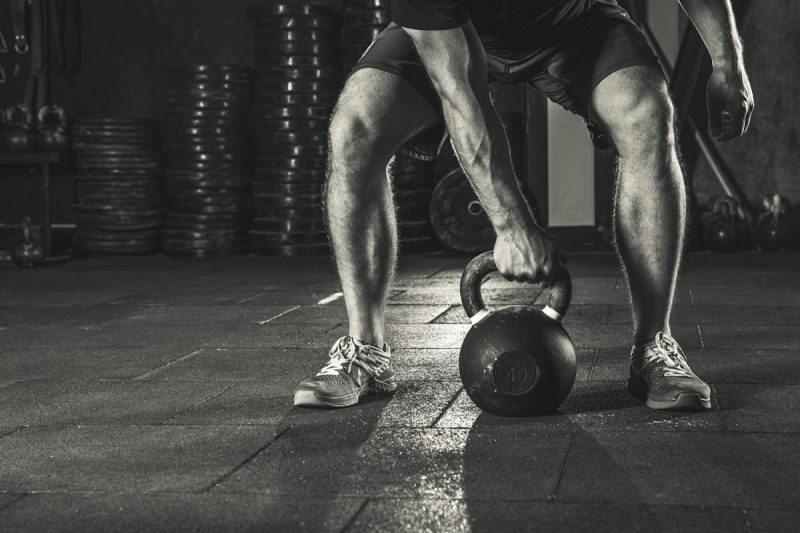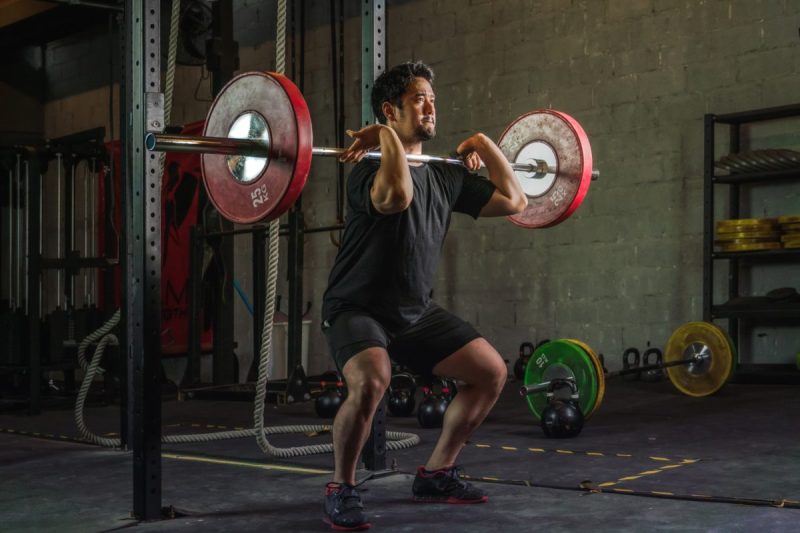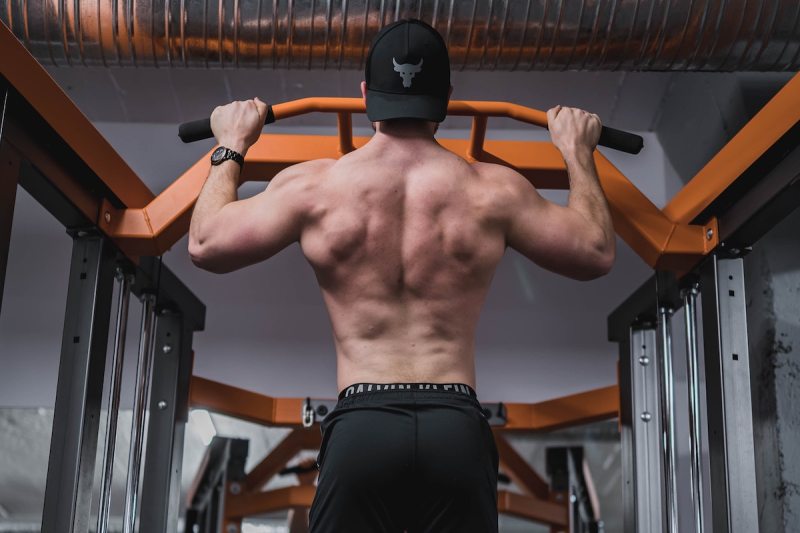The new Army Combat Fitness Test has a new way to test the strength of American soldiers. Now you can join in on the fitness trend to get stronger in your own day-to-day living.
The Army began beta testing to develop functional strength in 2018, and the new physical exam becomes official in October 2022. Functional strength training involves resistance work that improves the performance of movements during daily activities. Life in the field isn’t easy, so the Army wants to make sure its field combatants have the power, conditioning, and form to prevent injury and excel when duty calls, from hauling weight long distances to moving quickly over short distances.
Functional strength training is also buzzworthy outside of the armed forces because it provides a foundation to a more energized, healthier existence through lifting heavier weights, building muscle tone, and upping your cardio fitness game. At the beginner level, functional strength exercises include basic, critical movements like squats, planks, and pushups.
Here, The Manual will review ten exercises to develop your functional strength to elevate your foundation, and ultimately, your fitness game.

Prisoner get-ups
A simple lower-body mobility movement, the prisoner get-up helps warm your body while building your quickness. All the exercise requires is getting down to the ground and getting back up using only your lower body and sans arms help. Prisoner get-ups work the quadriceps, glutes, and spinal erectors.
Here's how to do a prisoner get-up:
Step 1: Stand straight, hands behind your head, feet shoulder-width apart.
Step 2: Kneel down on your right knee.
Step 3: Then kneel on the left knee — both knees down.
Step 4: Lift up off of your left knee to remain kneeling on your right knee.
Step 5: Lift up off of your right knee and rise back up.
Perform three sets of five to ten get-ups on each side. Make sure your hands remain behind your head with your torso erect throughout.

Lateral lunges
Lateral lunges are also excellent warm-up exercises that fire up the sides of the quadriceps and the sides of the glutes, while stretching the groin to achieve greater leg flexibility.
Here's how to perform a left lateral lunge:
Step 1: Clasp your arms in front of your chest and stand with your feet shoulder-width apart.
Step 2: Step your right leg out to the side, keeping your foot pointed forward and bending into your left knee.
Step 3: Bring your body down laterally until your left arm rests lightly on your left knee, keeping your hands locked.
Step 4: Slowly come back to the starting position, and then lean to the opposite side.
Perform five to ten reps on each side.

Step-up shoulder presses
After you’ve warmed the muscles a bit, step into compound actions like step-up shoulder presses to double the weight training and add in cardio while mimicking several daily movements. This exercise, for example, works the lower glutes, quads, calves, core, upper deltoids, and triceps.
Follow these steps to do step-up shoulder presses:
Step 1: Stand behind a bench or a 2- to 3-foot elevated surface with a dumbbell in each hand at shoulder level.
Step 2: Step up with your right foot, pushing through your heel while simultaneously pressing the dumbbells straight up overhead.
Step 3: Slowly drop the dumbbells back to shoulder level and step back down, left foot first.
Step 4: Repeat, leading with the other leg.
Perform five to ten reps on each side.

One-arm kettlebell snatch
When doing bilateral (two-limbed) exercises, the stronger, more dominant arm or leg often takes on an unequal amount of the load, reinforcing imbalance. A functional, one-side exercise like kettlebell snatches can help bring the body back into alignment. One-armed kettlebell snatches also work the lower and upper body, hitting the back, shoulders, traps, glutes, quads, and hamstrings.
Follow these steps to do one-armed kettlebell snatches:
Step 1: Stand behind a kettlebell, feet shoulder-width apart.
Step 2: Keep your chest upright, and push your glutes back and bend your knees to grasp the handle with one hand, and the other arm extended to the side.
Step 3: In one smooth motion, stand up dynamically, pulling the kettlebell off the floor and keeping it straight up along the front of your body.
Step 4: As the weight rises above the shoulder, punch your arm up toward the ceiling while the kettlebell rolls easily to the backside of your wrist.
Step 5: Finish with your arm extended straight up over your shoulder, palm forward.
Step 6: Reverse the sequence and bring the kettlebell back to the floor.
Perform five to 15 reps on each side.

Front squats
Front squats move the load from your back to the front of your body, burning your core and challenging your legs’ balancing muscles in new ways. In addition, front squats will hammer your quads, glutes, abdominals, and upper back.
Here's how to perform front squats:
Step 1: Load the weight onto your front side and rest the barbell across your chest and the front of your shoulders. For dumbbells, rest one side of each on your front shoulders.
Step 2: Push your elbows up, so they’re pointing forward, regardless of your equipment.
Step 3: Slowly squat down, initiating the movement in your hips and knee bend.
Step 4: Keep on your heels and resist the pull forward by keeping your chest up and your knees out.
Step 5: Push back up through the heels to your beginning position.

Jump lunges
Jump lunges offer many of the same benefits as jump squats, but with an added asymmetrical challenge. As such, jump lunges not only work the major quads, glutes, and hip flexors, the exercise also burns the gluteus medius (side of the butt), obliques, and sides of the thighs. Along the way, your cardio and balance get severely tested.
Follow these steps to perform a jump lunge:
Step 1: Step into a right lunge with your right foot forward, even with your knee, and your left foot back, foot flexed and your knee just barely scraping the ground.
Step 2: With your right, bend in front of your chest and your left arm back, hop up explosively (lifting off your right heel and the ball of the left foot), landing in a left lunge position, and swinging your arms opposite to the start.
Step 3: Give another explosion from your left heel and the ball of your right foot, landing in a right lunge position.
Complete five to ten jump lunges on each side.

One-legged Romanian deadlifts
Though you might look a bit crazy in the gym, one-legged Romanian deadlifts are an excellent way to boost the balancing of your muscles and round out total body strength. Standing and bending on one foot, this exercise works opposing back and front muscles like quads and hamstrings, glutes and abs, and lats and intercostals (rib muscles).
Here's how to do Romanian deadlifts:
Step 1: Grab a dumbbell in each hand, holding the in front of your thighs, palms back.
Step 2: Lean your weight into your right leg and begin to hinge at the waist.
Step 3: Allow your left leg to travel up and back while your arms to hang down.
Step 4: Keep your right knee soft, your back straight, and your gaze up to make sure that your hips stay square.
Step 5: When your left leg rises behind you, parallel to the ground, slowly return to start and repeat.
Complete five to ten reps on each side.

Farmer's walk
Farmer’s walks are a fun, super easy exercise that hammers the upper body as you lug heavy, awkward objects around without swinging or dropping them. Farmer's walks are great for grip strength, deltoids, traps, quads, hamstrings, and calves.
Follow these steps to perform farmer’s walks:
Step 1: Pick up a heavy dumbbell or kettlebell in each hand and draw your shoulder blades down and back to stabilize your shoulders.
Step 2: Keeping your core tight, chest elevated, and head up, walk forward with even, steady steps for time or distance.
As you get more comfortable, you can challenge yourself with faster and longer steps.

Deadlifts
Now that we are moving into heavy, full-body exercises, it's time to kick in one of the keys to strength training exercises — deadlifts. Standing and lifting weight from the ground targets your entire posterior chain — traps, upper back, erectors, and hamstrings — in addition to your core, forearms, and shoulders. There are few exercises that provide the sheer amount of strength building as deadlifts.
Here's how to do deadlifts:
Step 1: Place a barbell or dumbbells on the ground, standing directly behind them, feet shoulder-width apart.
Step 2: Maintaining a straight back with your gaze ahead, hinge at the waist, bend the knees slightly, and grip the barbell or dumbbells.
Step 3: Roll your shoulders down and back, and straighten your legs while lifting the weight, exhaling as you exert.
Step 4: When your legs are straight and you’ve pulled the weight up against your body, sit back in your hips with a slight knee bend.
Step 5: Following the same form, return the weight to the ground in a controlled motion.

Man makers
Ready to put all of these together in one gut-busting, muscle-pumping exercise? Get ready. It’s time to give man makers a go.
This move is a collection of several functional exercises (burpee, renegade row, pushup, squat, and overhead press), which all add up to quite a challenge that pumps the quads, hamstrings, glutes, lats, upper back, middle back, chest, shoulders. (Make sure you are warmed up before doing man makers, as these can be intense for the entire body.)
Follow these steps to perform man makers:
Step 1: Hold a pair of dumbbells at your sides, then crouch and place them parallel on the floor in front of you.
Step 2: Keep your hands on the dumbbells as you hop your feet behind you into a plank.
Step 3: From here, do a normal pushup and then hold at the top.
Step 4: Grasping the weights and keeping your elbows close in, pull up each weight into a one-arm row on each side.
Step 5: Do another pushup, and hop your feet back underneath you.
Step 6: Keeping back straight and bending at the hips, stand with the dumbbells in front of your body (like deadlifts).
Step 7: Shrug as you reach full extension, and flip up your elbow, bringing the weights to shoulder level.
Step 8: Drop into a full squat, and then explode upward, pressing the weights overhead as you land in a standing position.

How often should you train?
The answer to this really depends on your individual lifestyle. Some people have more free time than others, and you may be more or less experienced with exercise. No matter your situation, the key is to be realistic with yourself. Overcommitting can result in disappointment, so start small and build from there.
A good general goal is exercising three to four days per week. Try to allow for one rest day in between muscle group to allow them to properly recover.
Working out should not only be for strength training, but to make sure your body can handle and excel through the rigors of daily life. While you’re building your muscles, you also receive incredible mental health benefits, a clearer perspective, and sharpened focus. While you always want to progress, the focus of functional workouts should be just that: to make sure you are at top of your game.




